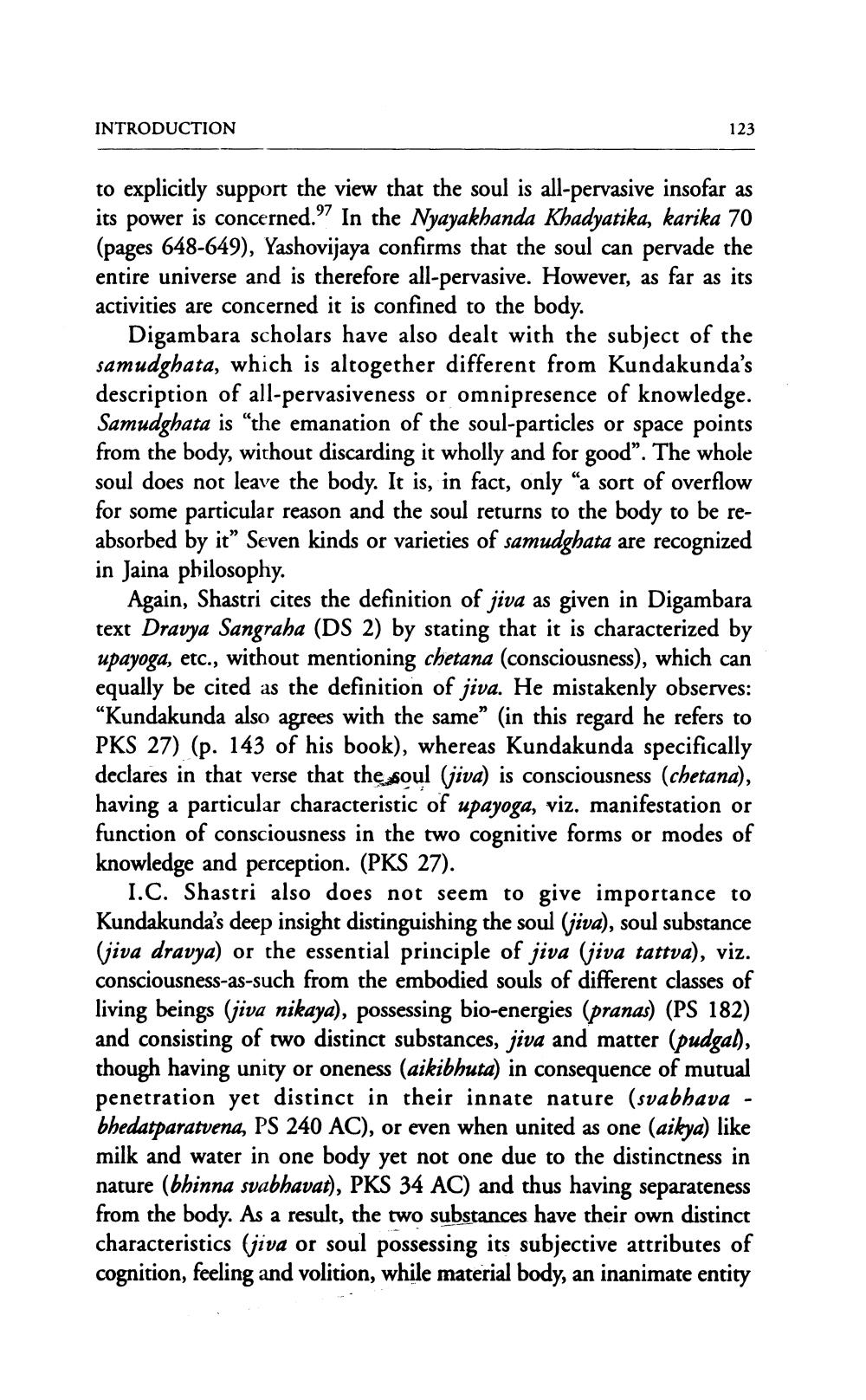________________
INTRODUCTION
123
to explicitly support the view that the soul is all-pervasive insofar as its power is concerned." In the Nyayakhanda Khadyatika, karika 70 (pages 648-649), Yashovijaya confirms that the soul can pervade the entire universe and is therefore all-pervasive. However, as far as its activities are concerned it is confined to the body.
Digambara scholars have also dealt with the subject of the samudghata, which is altogether different from Kundakunda's description of all-pervasiveness or omnipresence of knowledge. Samudghata is "the emanation of the soul-particles or space points from the body, without discarding it wholly and for good". The whole soul does not leave the body. It is, in fact, only "a sort of overflow for some particular reason and the soul returns to the body to be reabsorbed by it" Seven kinds or varieties of samudghata are recognized in Jaina philosophy.
Again, Shastri cites the definition of jiva as given in Digambara text Dravya Sangraha (DS 2) by stating that it is characterized by upayoga, etc., without mentioning chetana (consciousness), which can equally be cited as the definition of jiva. He mistakenly observes: "Kundakunda also agrees with the same" (in this regard he refers to PKS 27) (p. 143 of his book), whereas Kundakunda specifically declares in that verse that the soul (jiva) is consciousness (chetana), having a particular characteristic of upayoga, viz. manifestation or function of consciousness in the two cognitive forms or modes of knowledge and perception. (PKS 27).
I.C. Shastri also does not seem to give importance to Kundakunda's deep insight distinguishing the soul (jiva), soul substance (jiva dravya) or the essential principle of jiva (jiva tattva), viz. consciousness-as-such from the embodied souls of different classes of living beings (jiva nikaya), possessing bio-energies (pranas) (PS 182) and consisting of two distinct substances, jiva and matter (pudgal), though having unity or oneness (aikibhuta) in consequence of mutual penetration yet distinct in their innate nature (svabhava bhedatparatvena, PS 240 AC), or even when united as one (aikya) like milk and water in one body yet not one due to the distinctness in nature (bhinna svabhavat), PKS 34 AC) and thus having separateness from the body. As a result, the two substances have their own distinct characteristics (jiva or soul possessing its subjective attributes of cognition, feeling and volition, while material body, an inanimate entity




